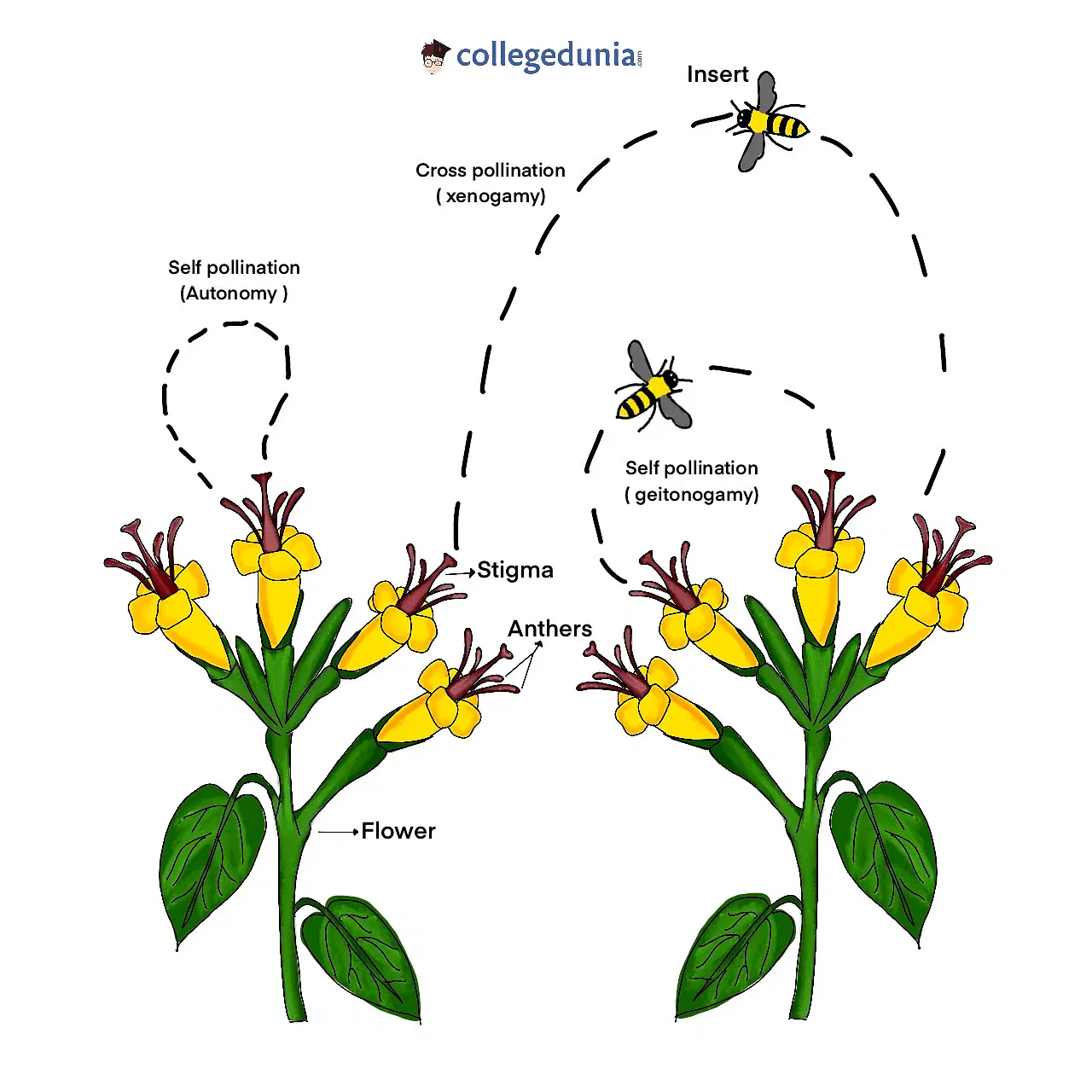MCQ ON Pollination for NEET |MCQ ON Pollination for NEET Biology class 12th |MCQ Questions for class 12 Biology chapter 2, Pollination with answer | Check the below NCERT MCQ question for class 12 Biology chapter 2 based on Pollination with answers.
MCQ Questions for class 12 Biology with Answers were prepared based on the latest pattern. We have provided class 12 Biology MCQ questions on Pollination with answers to help students understand the concept very well.

Pollination
MCQ on is useful for NEET/ CSIR/ UGC/ CBSE/ ICSE /AIIMS EXAM/ AFMC EXAM/ JAC exam/ STATE LEVEL MEDICAL EXAMEXAM
Introduction:-
Pollination:-Pollination is the biological process by which pollen, containing the male reproductive cells (sperm), is transferred from the male reproductive organ (anther) of a flower to the female reproductive organ (stigma) of the same or another flower. This transfer of pollen can occur through various agents, including wind, insects, birds, bats, or other animals. Pollination is a critical step in the fertilization of flowering plants, leading to the formation of seeds and the continuation of plant species. It plays a fundamental role in the reproduction and diversity of many plant species.
MCQ ON Pollination for NEET
Here are 15 multiple-choice questions (MCQs) related to pollination in plants, along with their answers:
1. What is pollination in plants?
a) The production of seeds
b) The release of pollen grains
c) The transfer of pollen from the anther to the stigma
d) The growth of roots
Answer: c) The transfer of pollen from the anther to the stigma
2. Which part of the flower typically produces pollen?
a) Stigma
b) Style
c) Anther
d) Ovary
Answer: c) Anther
3. What is the main purpose of pollination in plants?
a) To produce nectar
b) To attract pollinators
c) To support the flower’s structure
d) To protect the ovules
Answer: b) To attract pollinators
4. Which of the following is NOT a common pollinator of flowers?
a) Bees
b) Wind
c) Butterflies
d) Earthworms
Answer: d) Earthworms
5. What is the term for plants that rely on wind to carry their pollen to other flowers?
a) Insect-pollinated
b) Self-pollinating
c) Wind-pollinated
d) Bird-pollinated
Answer: c) Wind-pollinated
6. Which type of pollination involves the transfer of pollen from the anther of one flower to the stigma of another flower on the same plant?
a) Cross-pollination
b) Self-pollination
c) Wind-pollination
d) Animal-pollination
Answer: b) Self-pollination
7. What is the primary role of nectar in the pollination process?
a) To provide a source of food for pollinators
b) To protect the ovules
c) To produce pollen
d) To produce seeds
Answer: a) To provide a source of food for pollinators
8. Which part of the flower receives pollen during the pollination process?
a) Anther
b) Ovule
c) Stigma
d) Style
Answer: c) Stigma
9. In entomophilous pollination, which organisms are the primary pollinators?
a) Wind
b) Birds
c) Insects
d) Mammals
Answer: c) Insects
10. What is the purpose of the pollen tube in the pollination process?
a) To produce nectar
b) To carry pollen
c) To guide the growth of pollen to the ovule
d) To protect the ovules
Answer: c) To guide the growth of pollen to the ovule
11. Which of the following is an example of a plant adaptation to promote pollination by animals?
a) Producing copious amounts of wind-borne pollen
b) Developing bright red petals
c) Releasing pollen only at night
d) Producing a strong scent
Answer: d) Producing a strong scent
12. In anemophilous pollination, how is pollen typically transported from one flower to another?
a) By insects
b) By wind
c) By birds
d) By mammals
Answer: b) By wind
13. What term describes the transfer of pollen from a flower on one plant to a flower on another plant of the same species?
a) Cross-pollination
b) Self-pollination
c) Wind-pollination
d) Animal-pollination
Answer: a) Cross-pollination
14. The mutualistic relationship between flowers and their pollinators is an example of:
a) Competition
b) Symbiosis
c) Predation
d) Parasitism
Answer: b) Symbiosis
15. Which of the following is NOT a common pollination agent?
a) Bees
b) Moths
c) Spiders
d) Bats
Answer: c) Spiders
Conclusion:-
MCQ ON Pollination for NEET | Which of the following is NOT a common pollination agent?, a) Bees, b) Moths, c) Spiders, d) Bats, Answer: c) Spiders







Leave a Comment